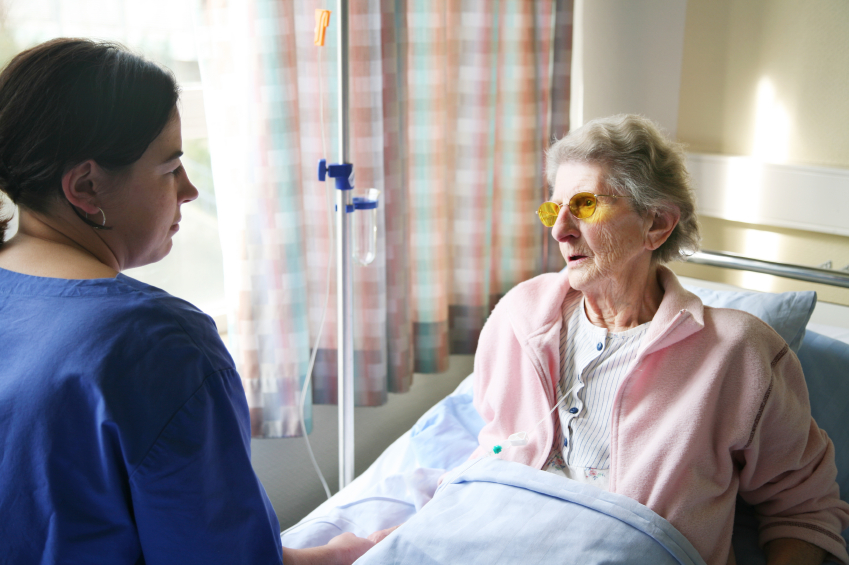 In nursing homes and other long-term adult care facilities, it is estimated that somewhere between one and three million infections take place each year. Furthermore, as many as 380,000 patients may die each year as a result of an infection that they contract. Nursing home infections thus represent a serious issue for elderly residents. For nursing home medical staff, enforcing proper infection prevention techniques is an important issue.
In nursing homes and other long-term adult care facilities, it is estimated that somewhere between one and three million infections take place each year. Furthermore, as many as 380,000 patients may die each year as a result of an infection that they contract. Nursing home infections thus represent a serious issue for elderly residents. For nursing home medical staff, enforcing proper infection prevention techniques is an important issue.
Types of Nursing Home Infections
In the nursing home setting, there are a number of factors which increase the prevalence of infections. The immune systems of elderly individuals are often weaker than those of the general population. Additionally, the side effects of some medications and preexisting medical conditions may increase a resident’s susceptibility to contracting an infection. The close living quarters often encountered in the nursing home environment also increase the likelihood that an infection will spread among the resident population.
Elder Influenza
According to data compiled in 1997, influenza and its complications were the sixth leading cause of death in the US. Alarmingly, individuals 65 years of age or older accounted for over 90 percent of these cases of death. In the nursing home setting, influenza outbreaks affect between 20 and 30 percent of the population. During outbreaks of influenza in a nursing home, the rate of death may be as high as five percent.
Vaccination can be helpful in limiting the influenza infection rate of nursing home residents. However, it is necessary that the greatest possible number of nursing home staff members are also vaccinated. If staff members are not vaccinated, it increases the probability that they will pass on influenza to residents. Improper sanitation and hygiene on the part of nursing home staff may also contribute to high influenza infection rates.
Elder UTIs
Urinary tract infections (UTIs) are the most common form of infection encountered in the nursing home setting. A urinary tract infection may take place anywhere along the urinary tract, including the bladder and kidneys. Advanced age is a primary risk factor in urinary infections. However, long time spent immobile and improper hygiene can also contribute to the likelihood of contracting a urinary infection.
Residents in the nursing home setting may remain immobile for long periods of time or require a catheter. In many facilities, encouraging resident mobility and performing proper catheter insertion are both responsibilities of nursing home staff. Failure by staff to perform these tasks may increase a loved one’s risk of contracting a urinary tract infection.
Elder Scabies
Caused by a type of mite known as Sarcoptes scabiei hominis, scabies is often found in closely confined settings. In addition to kindergartens, nursing homes are a common environment for scabies to spread and infect multiple individuals. A specific kind of scabies known as “crusted scabies” is particularly prevalent in nursing home communities. Often, it is not properly identified by nursing home medical personnel and goes untreated. When left untreated or undiagnosed, crusted scabies can spread throughout a nursing home. Scabies may be spread by both infected residents and personnel who have failed to practice proper hygiene.
Nursing Home Infection Lawsuits
The advanced age of elderly patients is already a risk factor for infection. However, negligence and abuse in the nursing home setting can increase the likelihood that a resident suffers an infection. Additionally, improper monitoring and follow-up by nursing home staff can worsen the side effects that accompany an infection. In some cases of infection, failure to follow protocol by medical personnel can result in the premature death of a nursing home resident. If family members believe that a nursing home is responsible for the death of a loved one, they may enlist an attorney and file a lawsuit.
Sources:
Kingston, Brian, and Charles Wright. “Influenza in the Nursing Home.” American Family Physician. 65.1 (2002): n. page. Web. 23 May. 2013. http://www.aafp.org/afp/2002/0101/p75.html
Magaziner, J, and JH Tenney. “Prevalence and characteristics of nursing home-acquired infections in the aged..” Journal of the American Geriatrics Society. 39.11 (1991): 1071-1078. Web. 23 May. 2013. http://www.ncbi.nlm.nih.gov/pubmed/1753044
